In this schematic is a simple blocking oscillator. Note that this won't simulate, as Circuit Lab does not have the type of toroid needed, but if you breadboard or prototype this circuit it will work fine.
simulate this circuit – Schematic created using CircuitLab
My modifications are clearly stated on the schematic. I've tried a variety of parts for each of these modifications but can't seem to find the right balance.
On a 1.8 V source, I get this result with the provided values in the schematic:
A few explanations:
- The Iout is a measurement taken by taking the voltage drop across a 10.4 ohm resistor across Out and ground over time, with the 470 uF electrolytic capacitor in place. I think that means (please forgive my math; read my profile to understand) 876.62 joules/μS. Please correct me if I'm wrong and point me to better math.
- The 3 VDC beside Vpp is a DC bias created by R2.
Here is the oscilloscope image:
- Edit: Oscilloscope shows 90 kHz in this image, but that changed 'FREQuently; it mainly stayed at 66 kHz
I am sure that somehow the frequency and duty cycle can be balanced better. Has anyone else found a way to modify it to be even better, or have suggestions to modify the one above a little more to improve the balance between voltage and current? I am aiming for a steady 12 V.
- Edit: Thank you AndyAka. I don't understand about the component selection you mentioned in Circuitlab. I have gone through every component just now in Circuit lab in SE and cannot for the life of me find this component you are talking about. Which group is it in? How can I get it to act exactly as the toroid I hand-wound?
- Also, you're right. I guess what I am looking for is a way to modify it, hopefully without wasting power through a Zener, balancing voltage and current to get just above 12 V, and efficiently drawing as much power as I can.
- I have a very good use for this circuit and don't wish to discuss that portion here, but this circuit doesn't have much use because it's never really been modified to much good use, has it?
- One good use I did play with while toying with ideas around it. I used the natural frequency of a similarly made circuit with a different toroid that produced about a frequency of 5 MHz and fed that through a transistor to drive the gate of a MOSFET. The AOD4186 MOSFET was set up as a typical boost circuit. It worked quite well. The 1.2 V source was able to produce the oscillation and amplify the transistor enough to drive the gate, though the duty cycle was poor.
- Thanks to Antonio51 find cool ways to think out of the box and learn entirely new things. That sounds like it has potential, yes?
